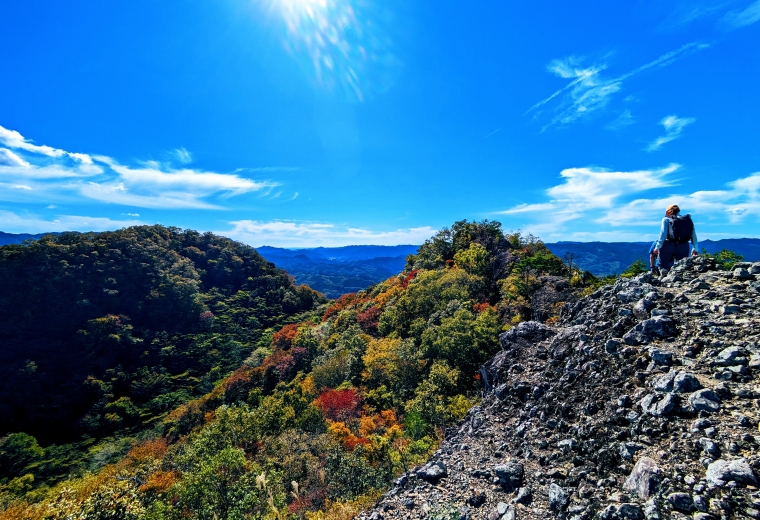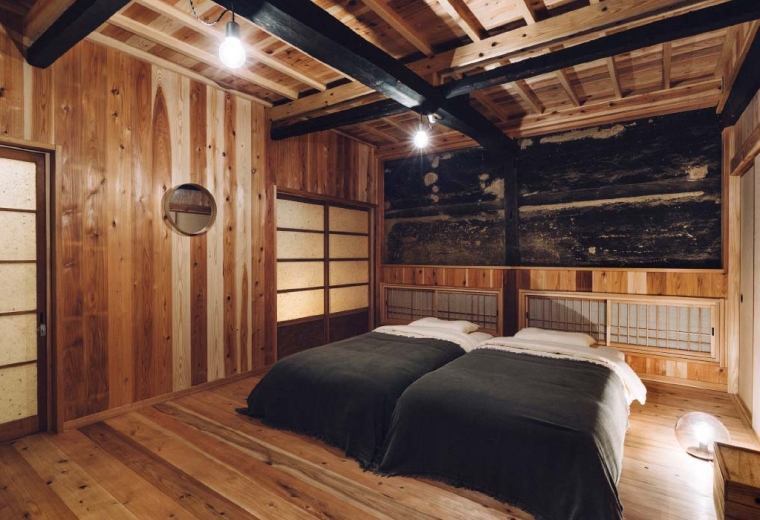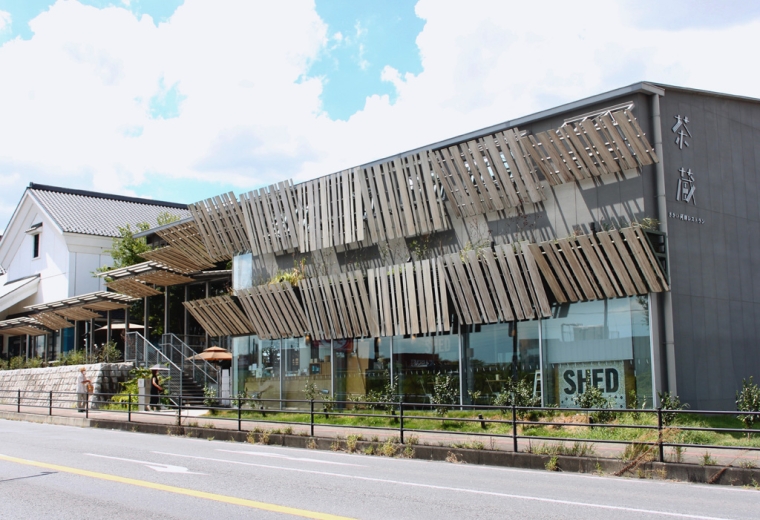Hiking Near Tokyo! Mt. Tsukuba: Highlights, Hot Spring Inns, and More
2023.10.26
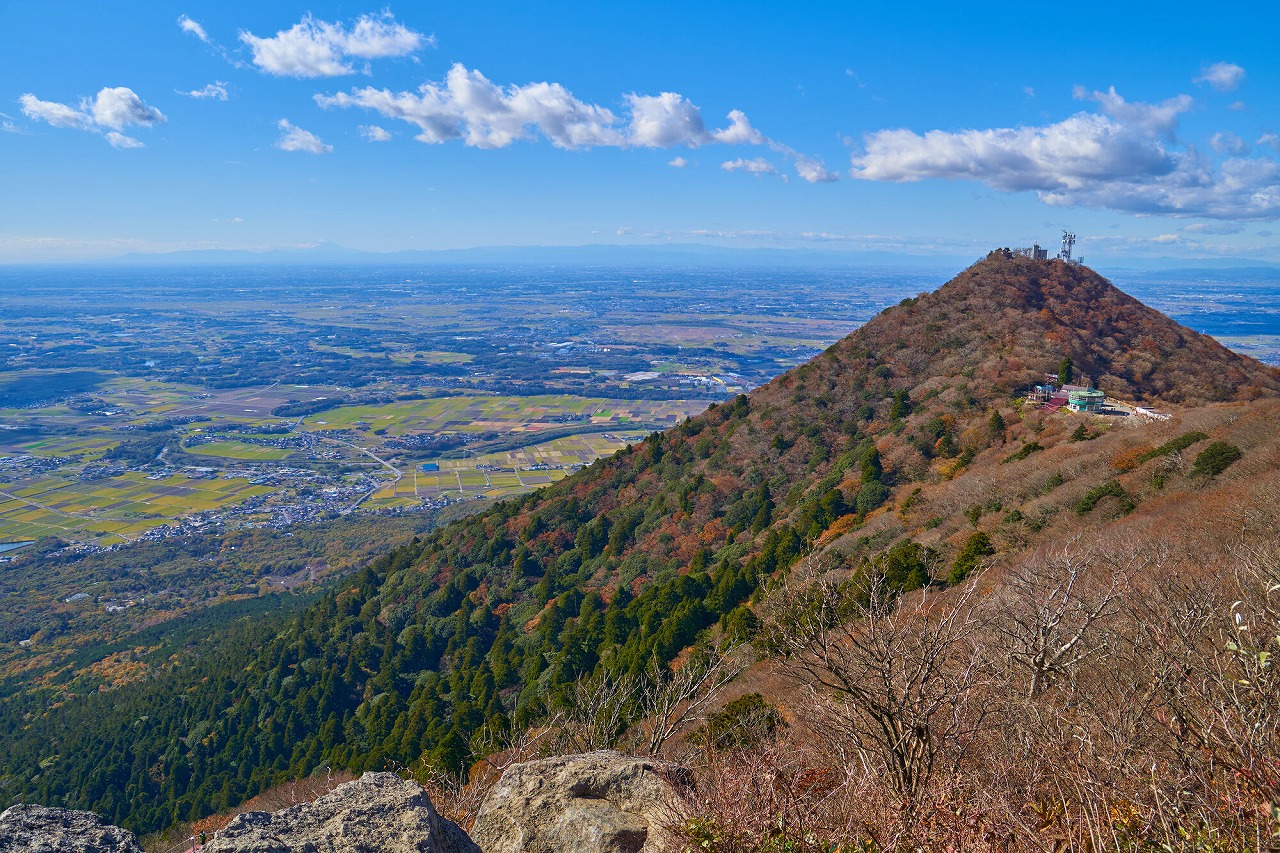
Mount Tsukuba is one of Japan’s One Hundred Famous Mountains and an ideal destination for a hiking trip from Tokyo. Here we introduce the features of Mt. Tsukuba, hiking trails, seasonal events, Tsukubasan Shrine, and nearby hot spring hotels.
The Charm of Mount Tsukuba, a Popular Hiking Spot near Tokyo
Mount Tsukuba is one of the One Hundred Famous Mountains in Japan, a ranking that is well-known among Japanese hiking enthusiasts. Although one of the conditions for a mountain to be on this list is an altitude of at least 1,500 meters (Mount Tsukuba is 877 meters high), it was exceptionally selected because of its beautiful mountain shape on the Kanto Plain, the fact that the entire mountain area is the sacred object of worship at the Tsukubasan Shrine, and its deep history expressed in the phrase “Tsukuba in the east, Fuji in the west” as used from a long time ago.
Known for its twin peaks, Nyotaisan (877 meters) and Nantaisan (871 meters), Mount Tsukuba has excellent hiking trails for all levels of climbers and is a popular hiking destination near Tokyo. Part of the Mt. Tsukuba Area Geopark, this mountain is home to a rich variety of flora and fauna, including rare plants, insects, and wild birds.
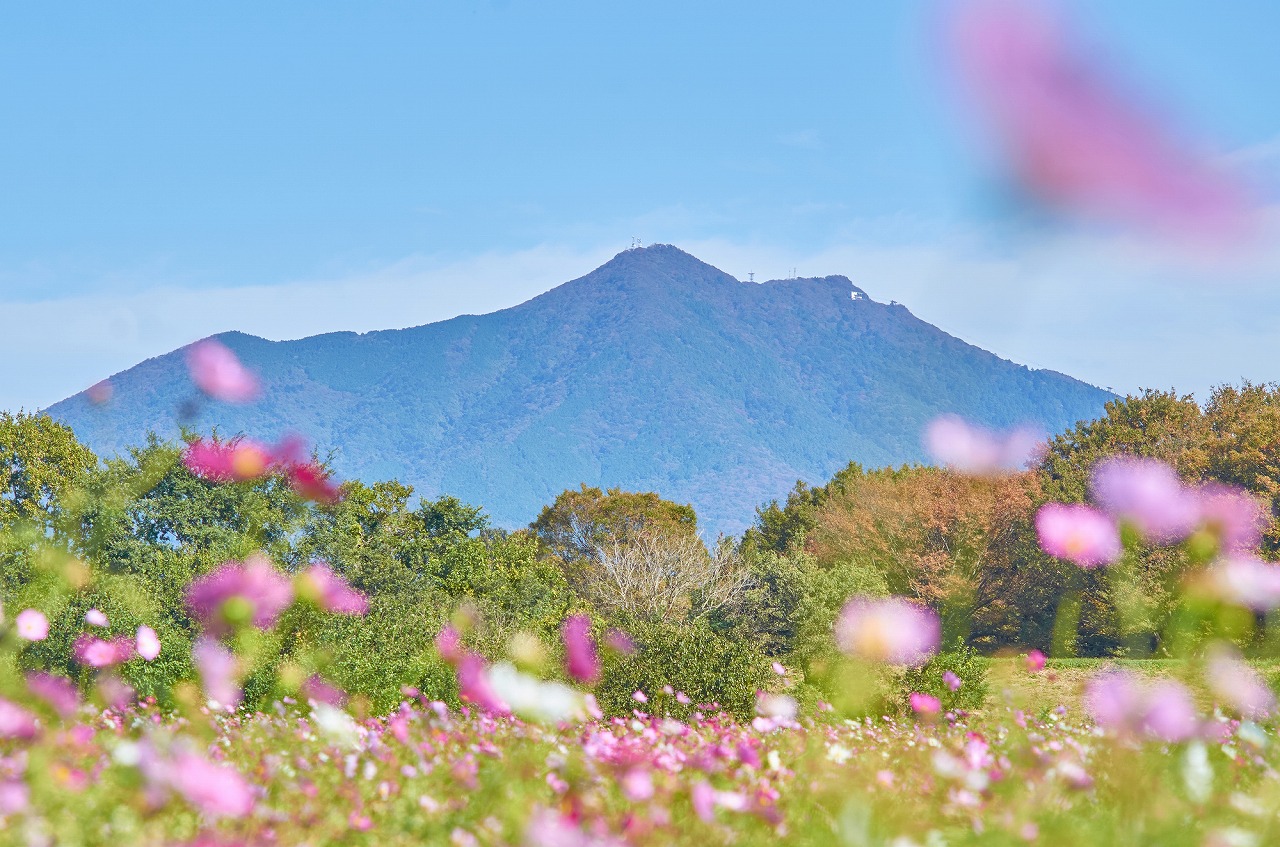
Mt. Tsukuba has been revered as a sacred mountain over the centuries, and visiting it is a chance to encounter a rich world of Japanese legends. There are several hot spring inns and guesthouses near the Tsukubasan-Jinja Iriguchi (Tsukubasan Shrine Entrance) bus stop , making this area an ideal destination for those who seek relaxation in the heart of nature.
How to Access Mt. Tsukuba from Tokyo
Tsukuba can be accessed in about 45 minutes from Tokyo’s Akihabara Station via the Tsukuba Express Line.
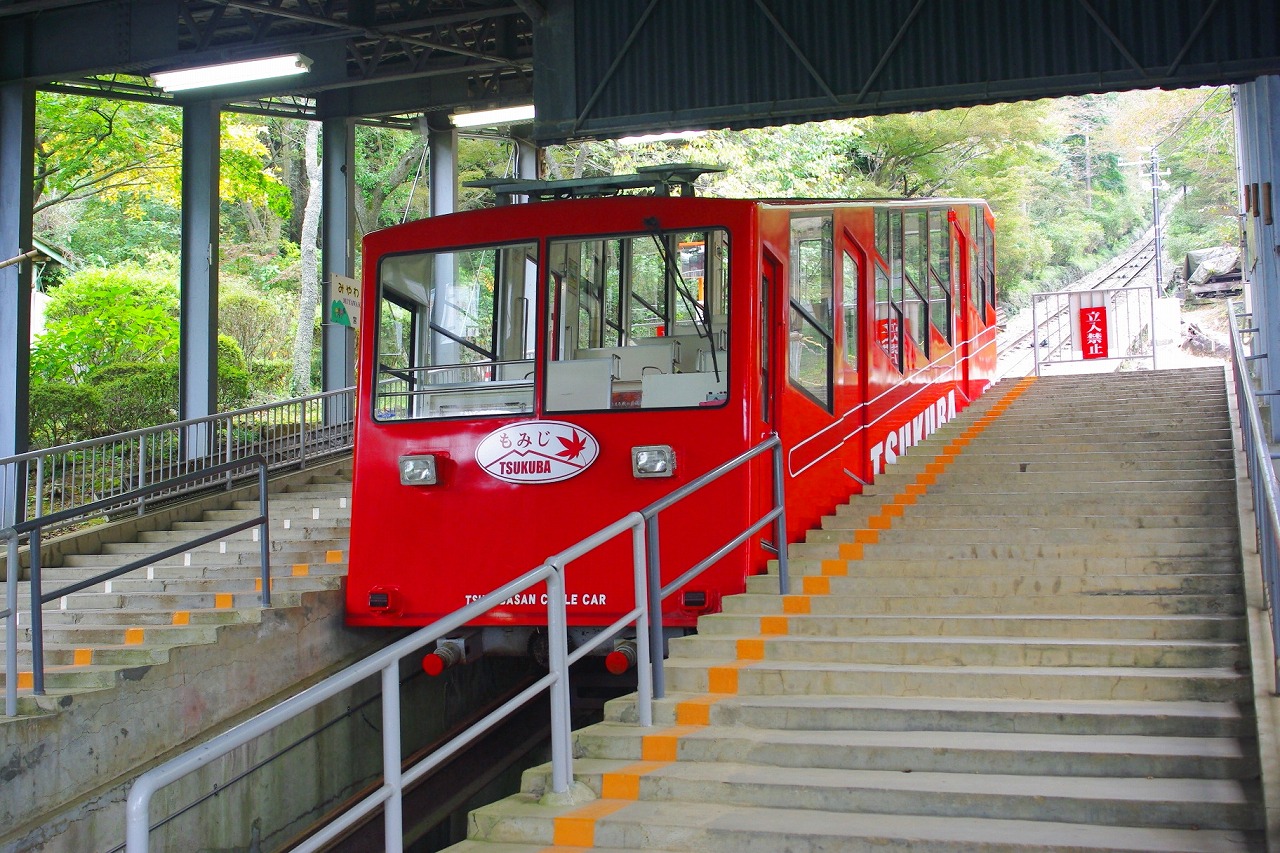
Mt. Tsukuba is easily accessible by local bus from the Tsukuba Center Bus Terminal near Tsukuba Station. It takes about 36 minutes to reach the Tsukubasan-Jinja Iriguchi bus stop; and from here, you can climb to the Nantaisan peak via cable car from Miyawaki Station.
Alternatively, you can use the ropeway service to reach the Nyotaisan peak from the Tsutsujigaoka bus stop. The Tsutsujigaoka bus stop can be reached in 50 minutes by bus from the Tsukuba Center Bus Terminal. The convenient access to the mountain top is one of the main reasons why Mt. Tsukuba is so popular among nature lovers.
Points of Interest and Seasonal Events at Mt. Tsukuba
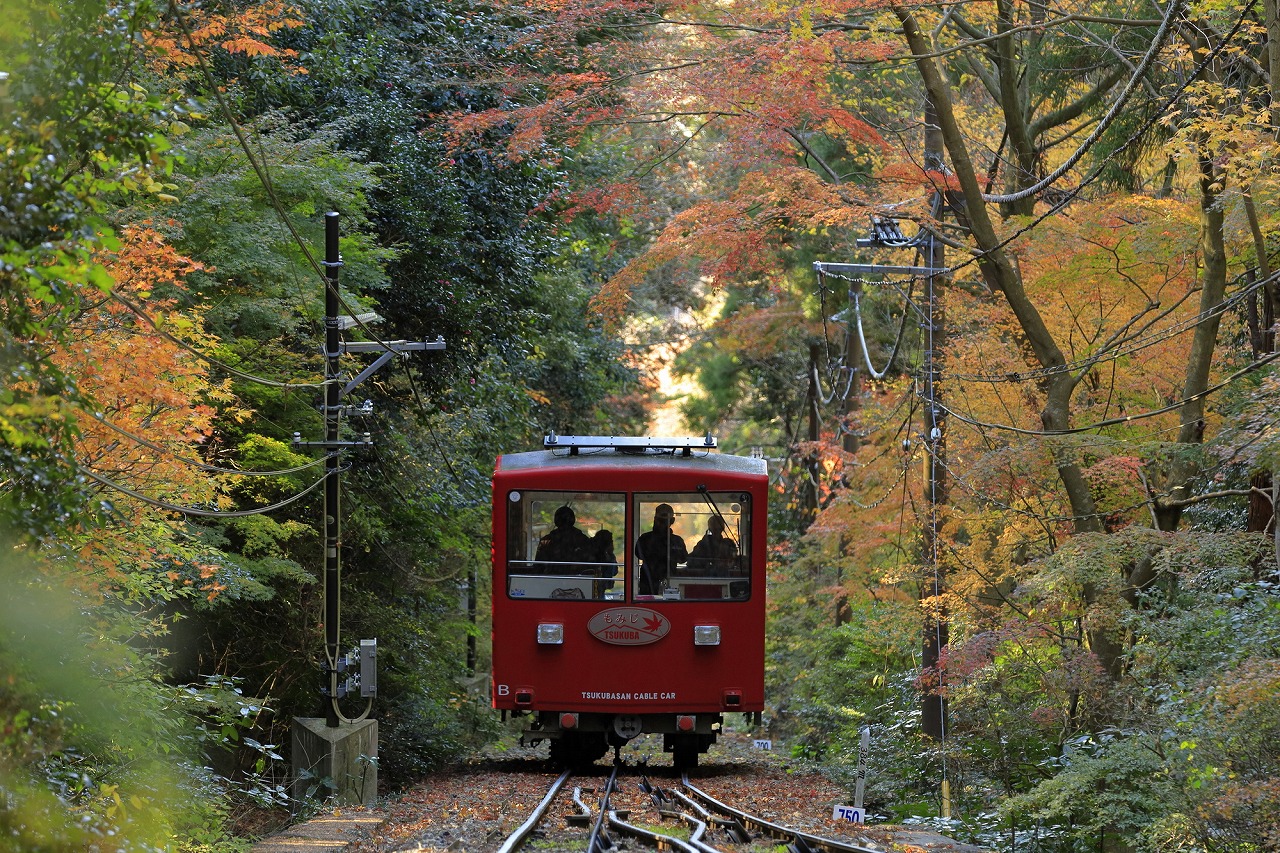
Mt.Tsukuba is a fascinating place to visit any time of the year, and you can enjoy the scenery and events that change with the seasons. Here are some of the main attractions of Mt.Tsukuba and seasonal events that shouldn’t be missed.
1. Tsukubasan Shrine
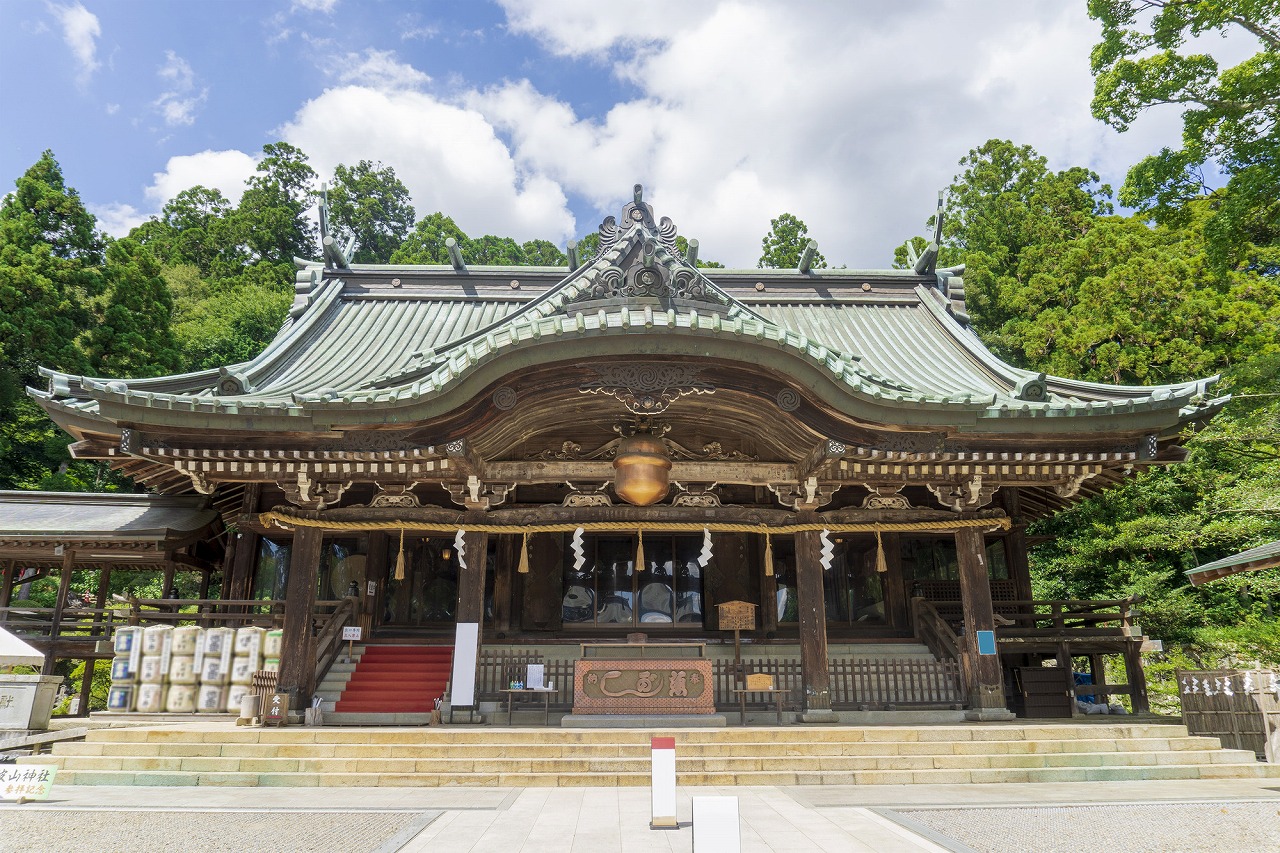
The two peaks of Mt. Tsukuba embody the deity couple Izanagi (Nantaisan, “male peak”) and Izanami (Nyotaisan, “female peak”), who are considered the parents of the Japanese archipelago and all the deities in Japanese mythology.
Tsukubasan Shrine enshrines these two major deities. According to the shrine records, Mount Tsukuba has been the object of worship for 3,000 years and is the spiritual entity enshrined here. A popular destination for hatsumode (the shrine visit at New Year’s when visitors pray for a good year), this shrine is said to answer prayers related to human connections and relationships.
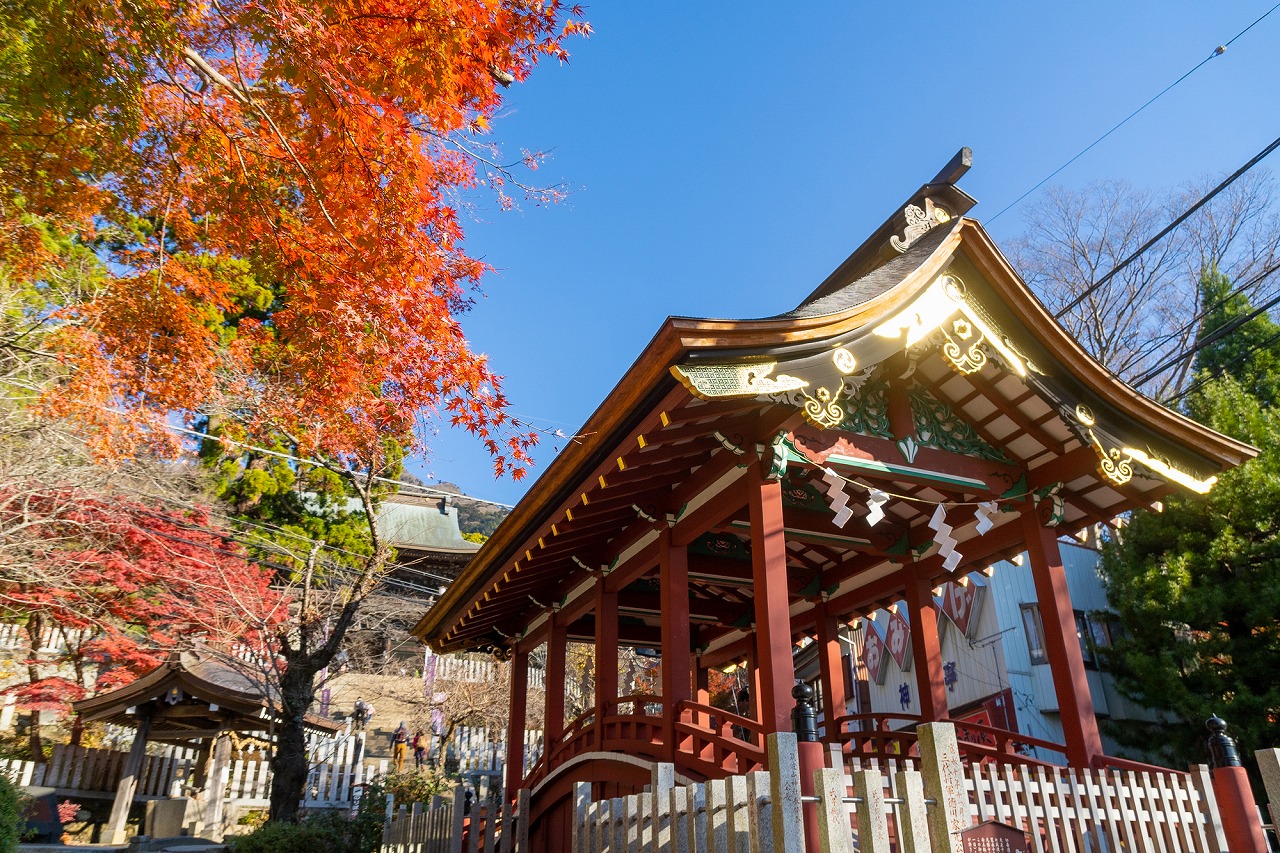
The structures within Tsukubasan Shrine’s precincts are splendid examples of traditional shrine architecture, with most dating back to 1633 when they were built as a donation from the shogun Tokugawa Iemitsu (1604-1651).
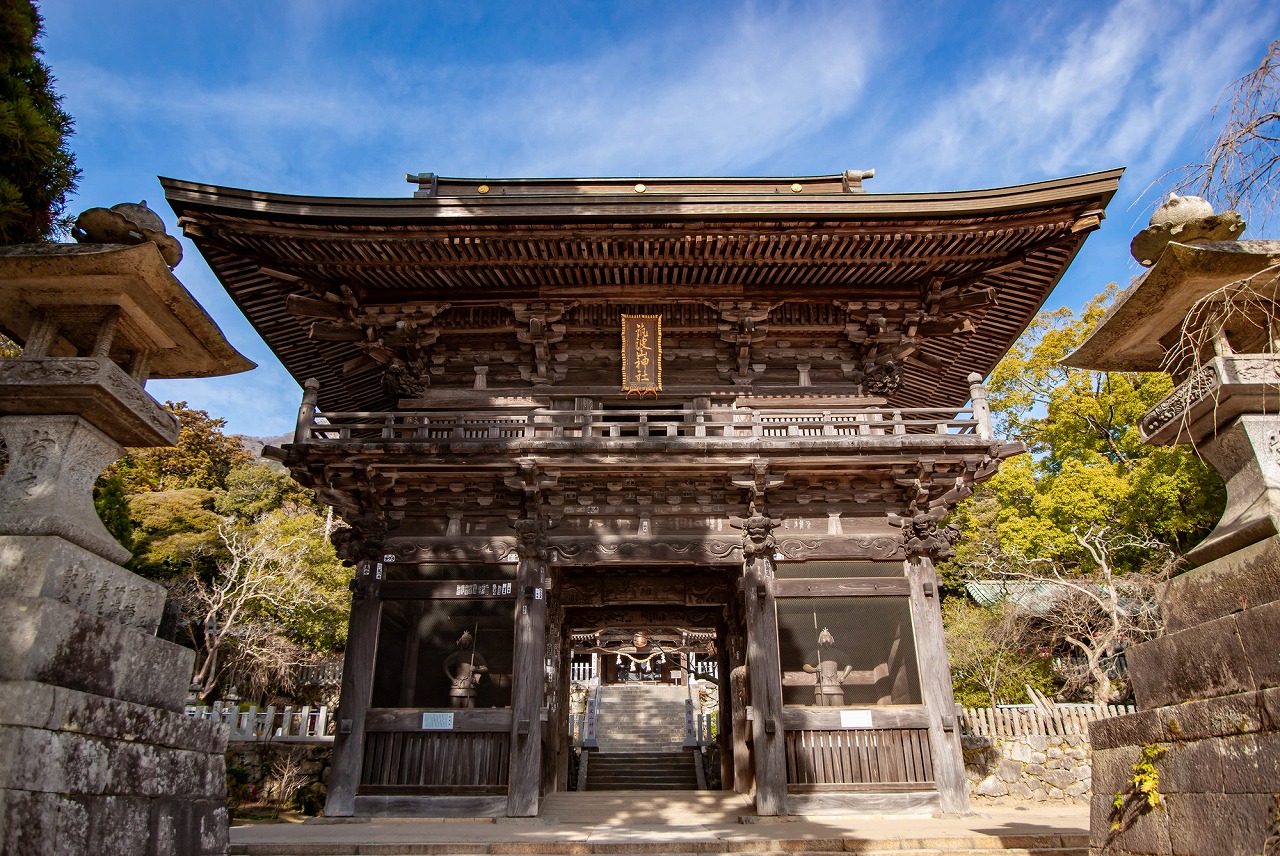
Shinto and Buddhist traditions were intertwined during that time, and the shrine architecture reflects this syncretism. For instance, the Zuijinmon Gate, first erected in 1633 and rebuilt twice after being destroyed by fires, is one element inspired by Shinto and Buddhist architecture. In addition, the majestic Haiden worship hall, the Hie Shrine and Kasuga Shrine within the grounds are also decorated with beautiful wood carvings.
It is customary for visitors to stop at Tsukubasan Shrine and pay their respects before heading to the mountain peaks via hiking trails or cable car.
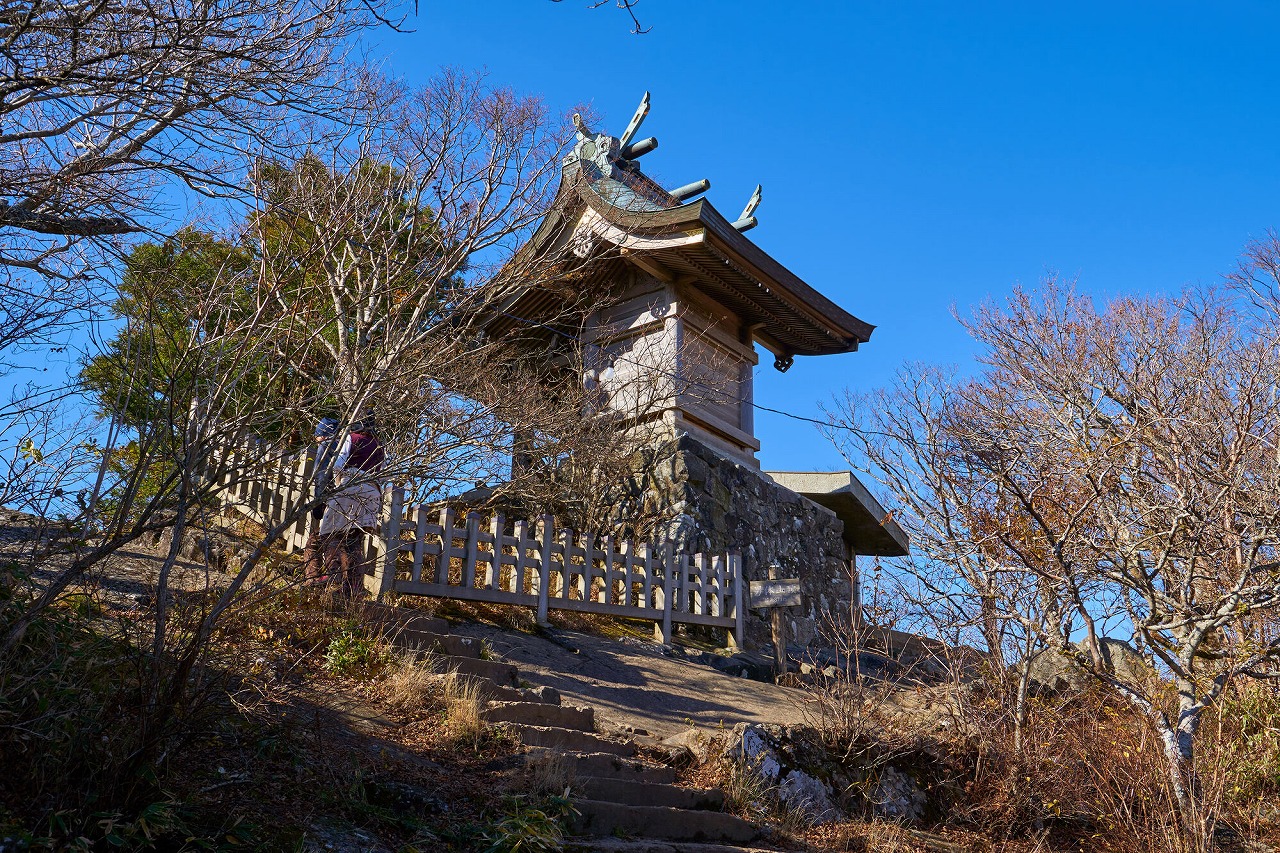
Furthermore, at the top of each peak is a shrine dedicated to the two main deities, Nyotaisan (Izanami) and Nantaisan (Izanagi). These structures are also part of the Tsukubasan Shrine.
2. The Plum Blossom Festival at Tsukuba Plum Grove
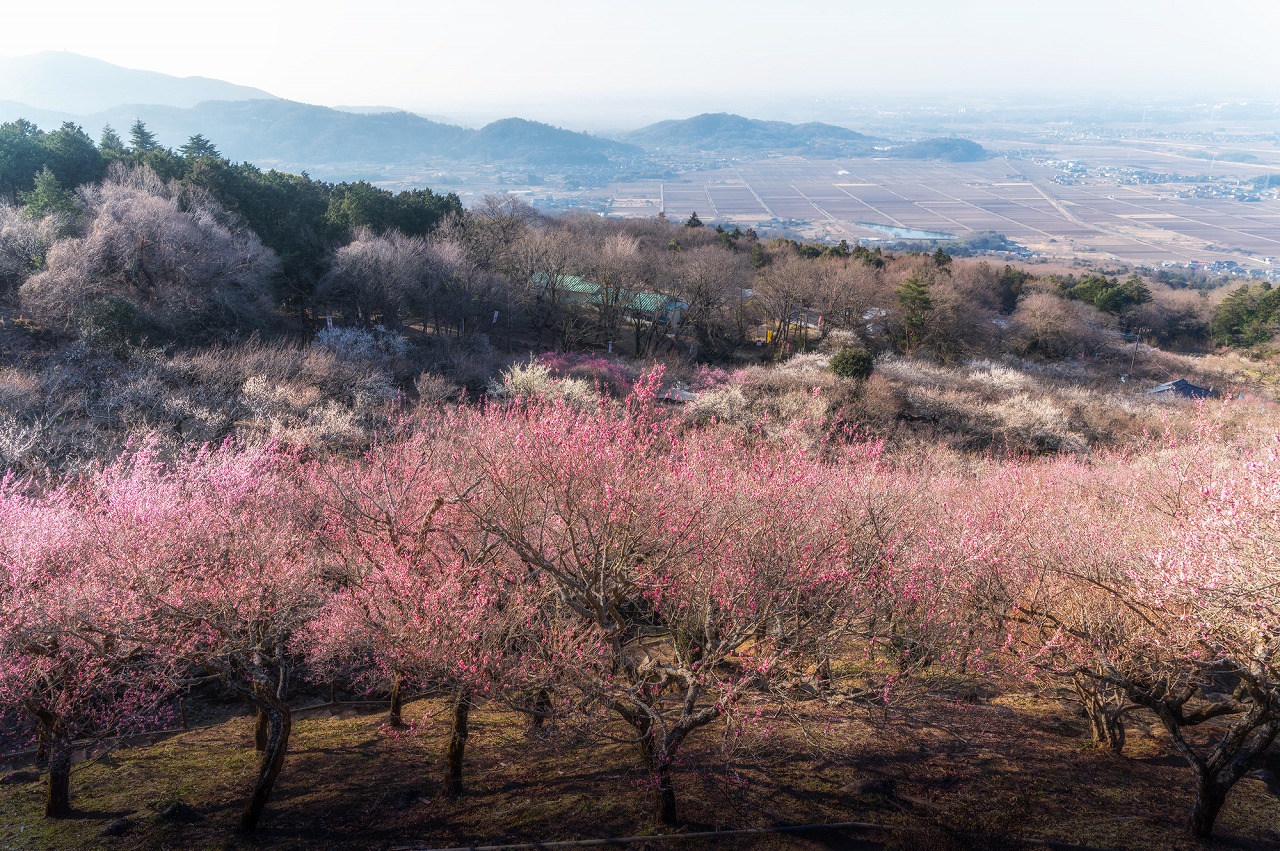
Plum blossoms, the earliest harbingers of spring, have become the iconic flowers of Ibaraki thanks to Mito’s Kairakuen Garden, another famous plum blossom viewing spot.
The Tsukuba Plum Grove (Tsukubasan Bairin), located near the Tsukubasan-Jinja Iriguchi bus stop, is home to around one thousand plum trees that bear white and red blossoms in early spring, filling the surroundings with color and their gentle fragrance.
The park usually hosts a Plum Blossom Festival from around mid-February to mid-March, attracting many visitors eager to catch the beautiful spring scenery.
3. Fall Foliage and Nighttime Light-ups
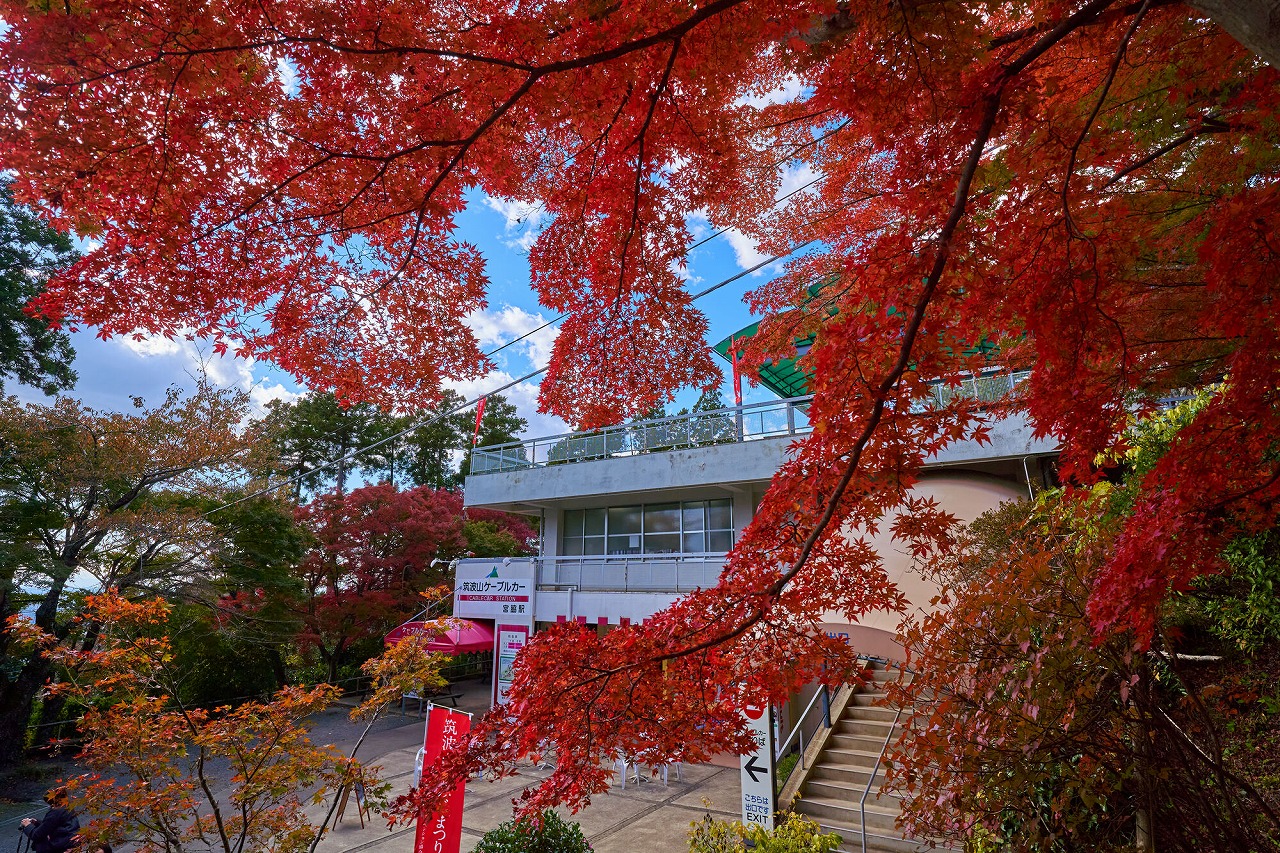
One of the most popular times to visit Mt. Tsukuba is in November, during the fall foliage season. The area around the cable car’s Miyawaki Station is home to maple trees that display foliage with spectacular red, yellow, and orange hues. Also, the ginkgo trees in the precincts of Tsukubasan Shrine display brilliant yellow foliage in the fall.
Moreover, the Miyukigahara Plateau, which connects the two peaks at the summit, also offers locations with beautiful fall foliage; the 1.5 km Nature Research Trail around the Nantaisan peak is an excellent trail for observing them.
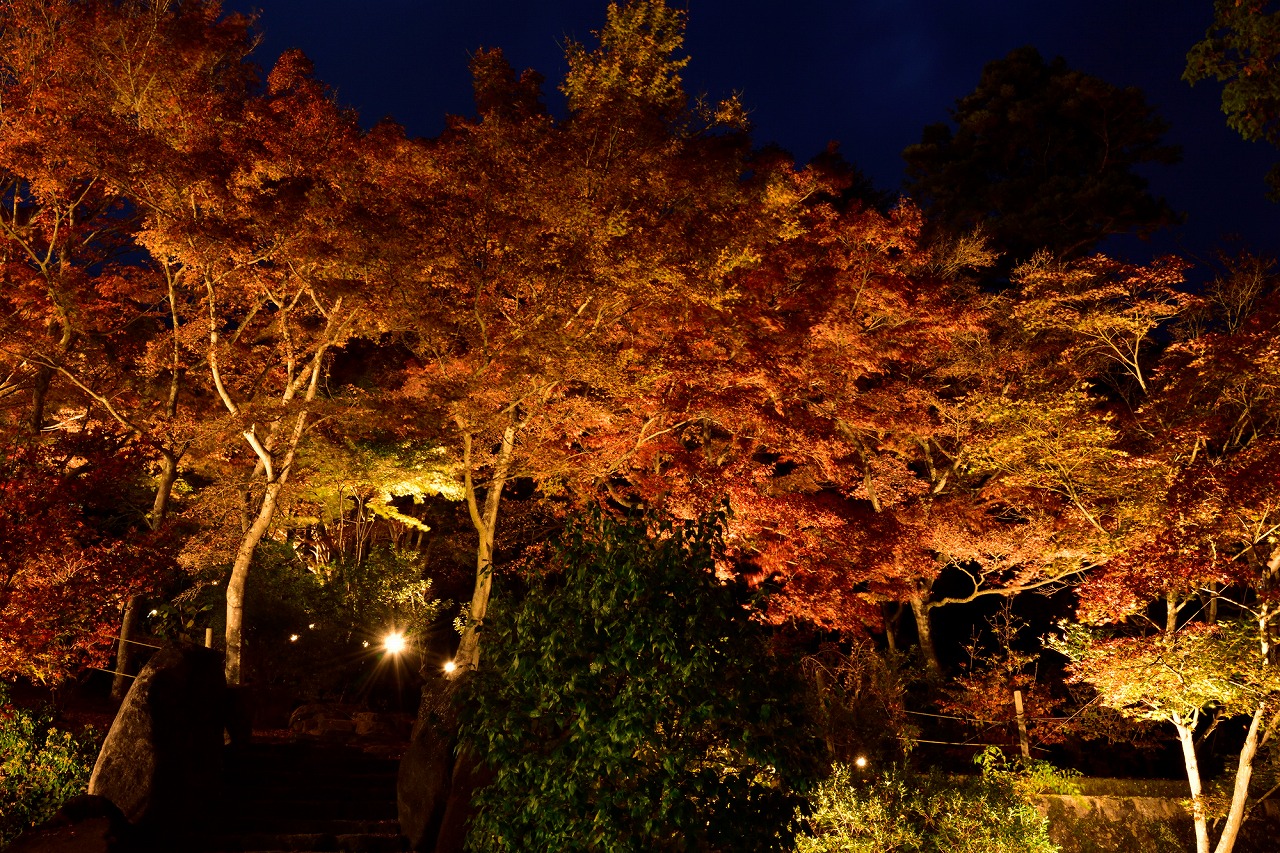
Throughout the whole month of November and until the early days of December, the maple trees around Miyawaki Station are being lit up on weekends and holidays in the evenings from 17:00 until 20:00. During the week when the foliage reaches the peak – usually the third week of November – the light-up event is held every day. The foliage looks simply stunning at night!
During this season, the Mt. Tsukuba Cable Car operates their “Night Cruising” service in the evenings. The cable car departs every 20 minutes. Only roundtrip tickets are available during the Night Cruising hours (adults 1,070 yen; children under 12 – free).
4. Mt. Tsukuba “Stardust Cruising”
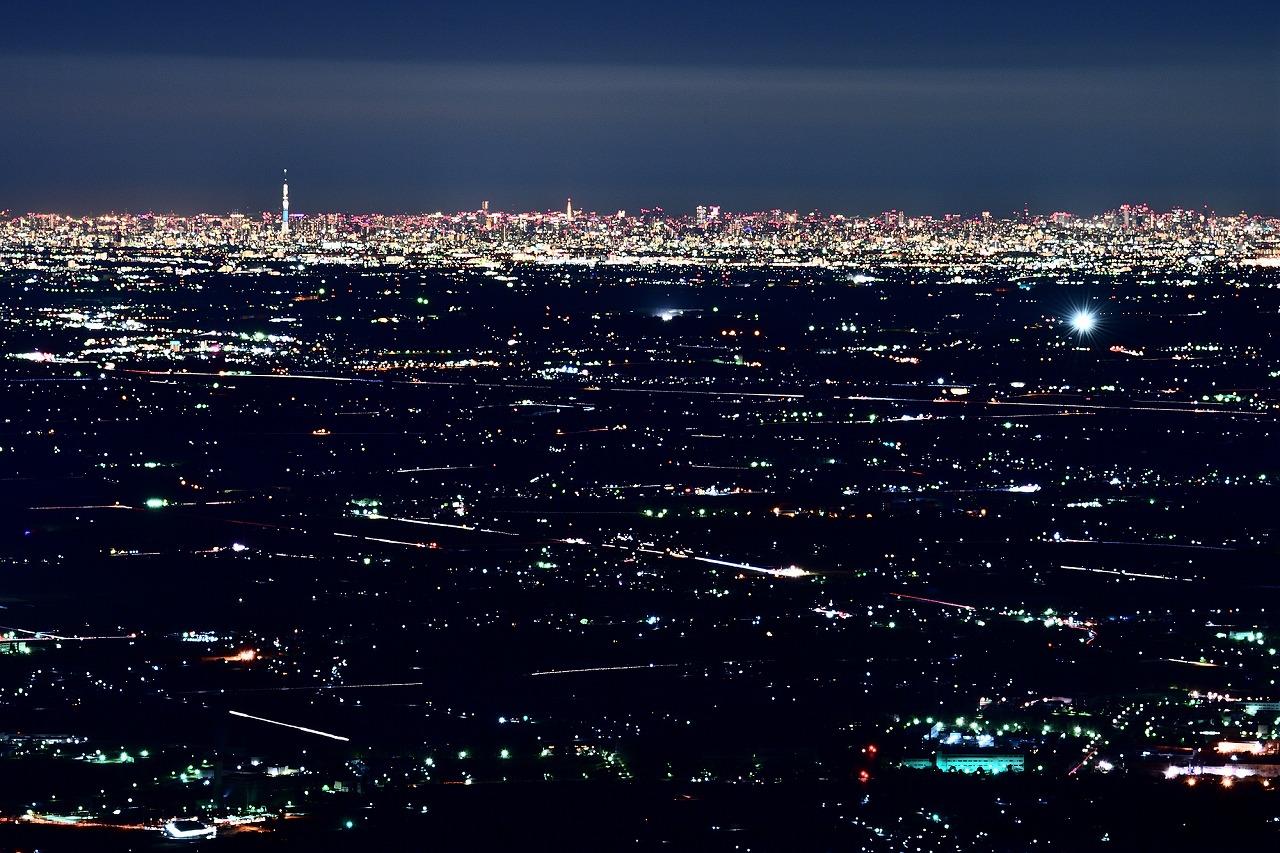
On weekends and holidays from mid-September until late December, the Mt. Tsukuba Ropeway operates the “Stardust Cruising” service between 16:40 and 21:00 in the evenings.
Stardust Cruising” offers views of the Kanto Plain at dusk and the sparkling Tokyo horizon. The view from the top of this mountain is designated as a “Japan Night View Heritage” site. In addition, this time of year offers excellent stargazing conditions due to a particularly clear night sky.
For a special evening with beautiful views near Mt. Tsukuba, why not visit at this time of the year to ride the “Stardust Cruising”? Only roundtrip tickets are available and are priced at 1,300 yen for adults (free for children under 12).
* The dates of the cable car’s “Night Cruising” and the ropeway’s “Stardust Cruising” change every year. For the latest information, please refer to the official website.
Hiking Trails for All Levels! Climbing Mt. Tsukuba
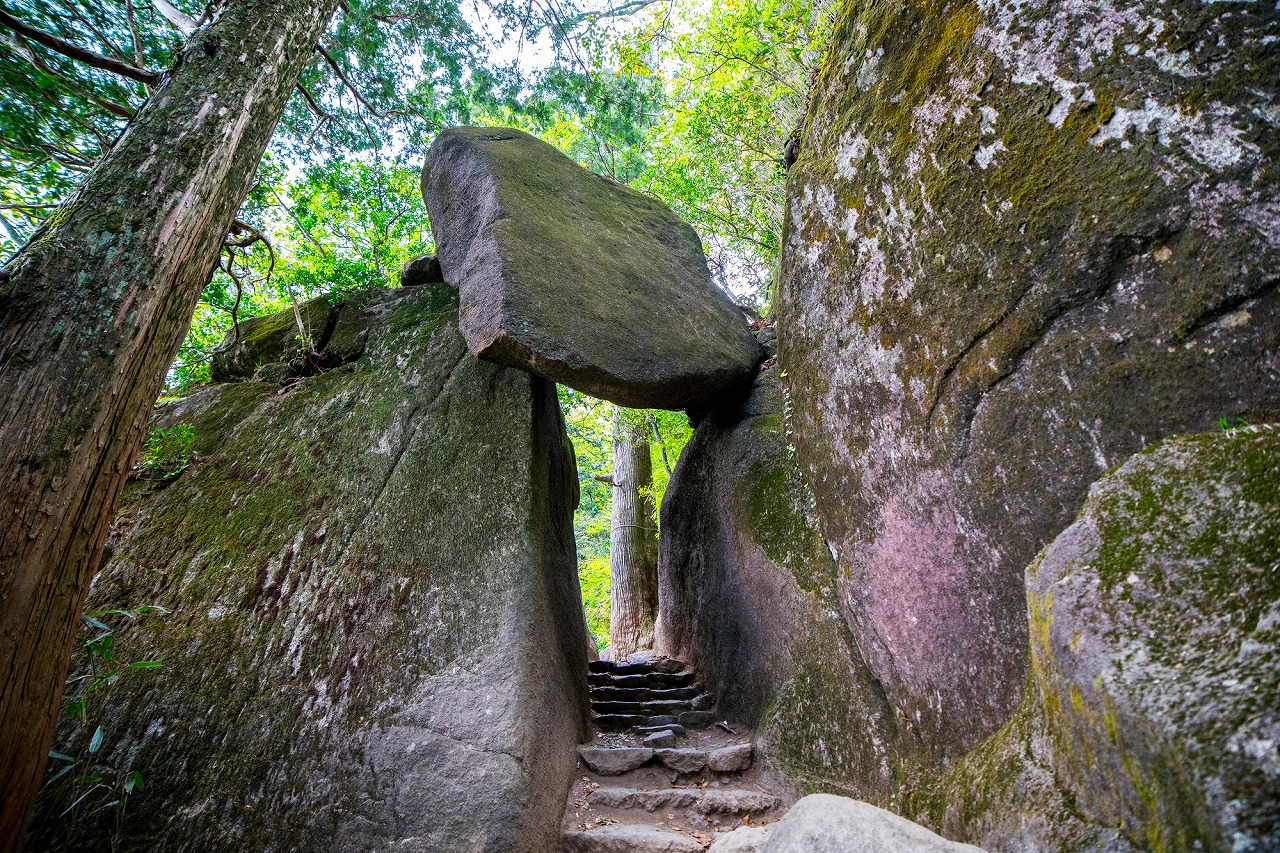 The Benkei-Nanamodori rock formation on the Shirakumobashi Course
The Benkei-Nanamodori rock formation on the Shirakumobashi Course
There are several types of hiking trails to the summit of Mt. Tsukuba. Each trail has unique features and highlights such as rocks with bizarre shapes.
– the Miyukigahara Course (2.1 km), the Shirakumobashi Course (2.7 km), and the Yakuo-in Course (3.7 km) are recommended for experienced and advanced hikers;
– the Otatsu-ishi Course (1 km), the Fukamine-hodo Trail (1.2 km), the Campsite Course (1.6 km), and the Higashi Tsukuba Hiking Course (4.4 km) are trails of medium difficulty;
– the Mukaeba Course (2.1 km), the Mountaintop Connection Trail (850 m), and the Nature Research Trail (1.4 km) around the Nantaisan Peak can be easily explored by casual hikers.
It’s important to wear trekking shoes instead of sneakers when exploring trails, regardless of the difficulty level, as the ground can become slippery after rainfall. Mt. Tsukuba is part of a geopark; therefore, accessing areas outside the hiking trails and taking animals, insects, plants, or rocks from the mountain is forbidden. Littering is also prohibited, so please be sure to have a plastic bag to take your waste away with you.
For details on each trail and maps, please visit the official website of Mt. Tsukuba: Japanese or English.
A Recommended Hiking Course That Anyone Can Enjoy
The most popular way of enjoying Mt. Tsukuba is by bus to the Tsukubasan-Jinja Iriguchi bus stop and taking the cable car from Miyawaki Station to the Nantaisan summit. From here, visitors can explore the area around Nantaisan peak along the Nature Research Trail and the area of two peaks along the Mountaintop Connection Trail.
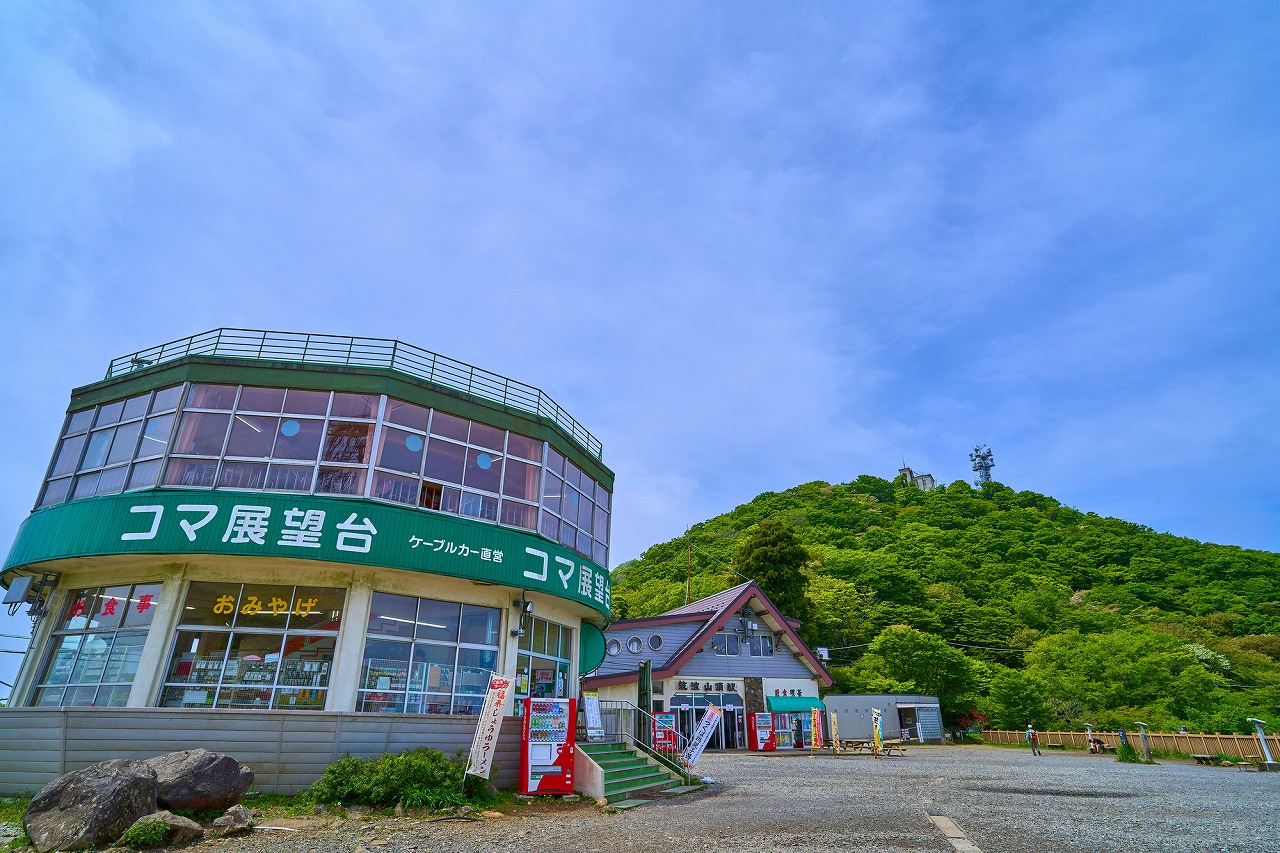
Near the Mt. Tsukuba Cable Car Tsukuba-Sancho Station at the summit is the Koma Observatory, a facility that can be accessed free of charge. There is a souvenir shop on the first floor, a dining area with beautiful views of the Kanto Plain on the second floor, and a rooftop observation area on the third floor.
The restaurant on the second floor is an excellent location to enjoy lunch or a snack. Their menu consists of a wide variety of dishes, including Tsukuba Udon (a local specialty of udon noodles), soba (buckwheat) noodles, Tsukuba chicken oyakodon (rice bowl with a topping of chicken and eggs), curry rice, ramen, as well as other dishes and delicious desserts.
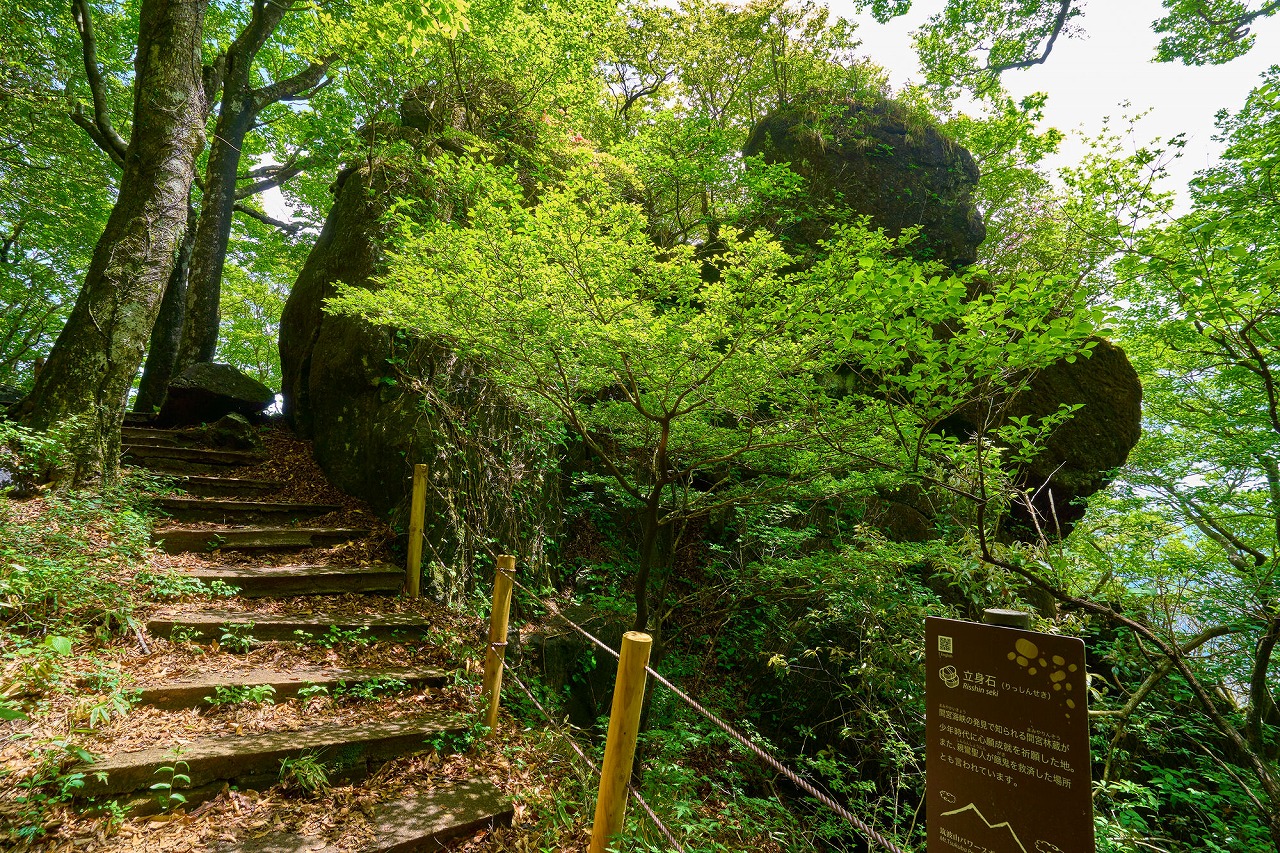 The Risshin Rock on the Nature Research Trail
The Risshin Rock on the Nature Research Trail
The Nature Research Trail around the Nantaisan Peak takes less than one hour to explore and gives plenty of insights into the rich natural environment of Mt. Tsukuba. This trail is particularly beautiful in November when the foliage of the maple trees takes on splendid red, orange, and yellow hues. The Risshin Rock and the Nantaisan Peak offer breathtaking views of the Kanto Plain; you can see as far as Tokyo and Mt. Fuji on clear days.
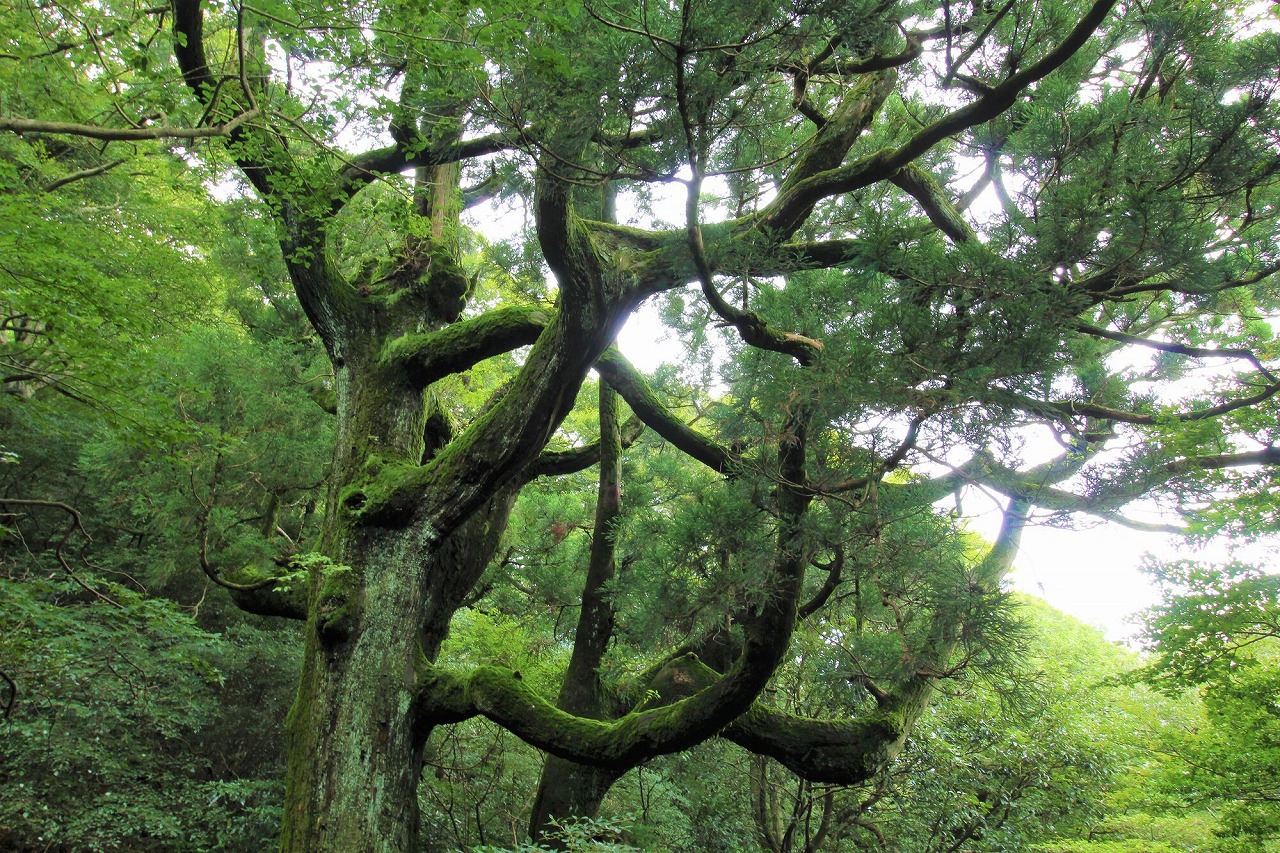 The Shiho Sugi on the Mountaintop Connection Trail
The Shiho Sugi on the Mountaintop Connection Trail
The summit trail connecting the Nantaisan peak to Nyotaisan can be trekked in about 35 minutes. On this trail, not far away from the Koma Observatory, there is a path leading to the Shiho Sugi, a pair of 40-meter-tall cedars estimated to be about 800 years old. They stand right by the spring at the origin of the Minanogawa River.
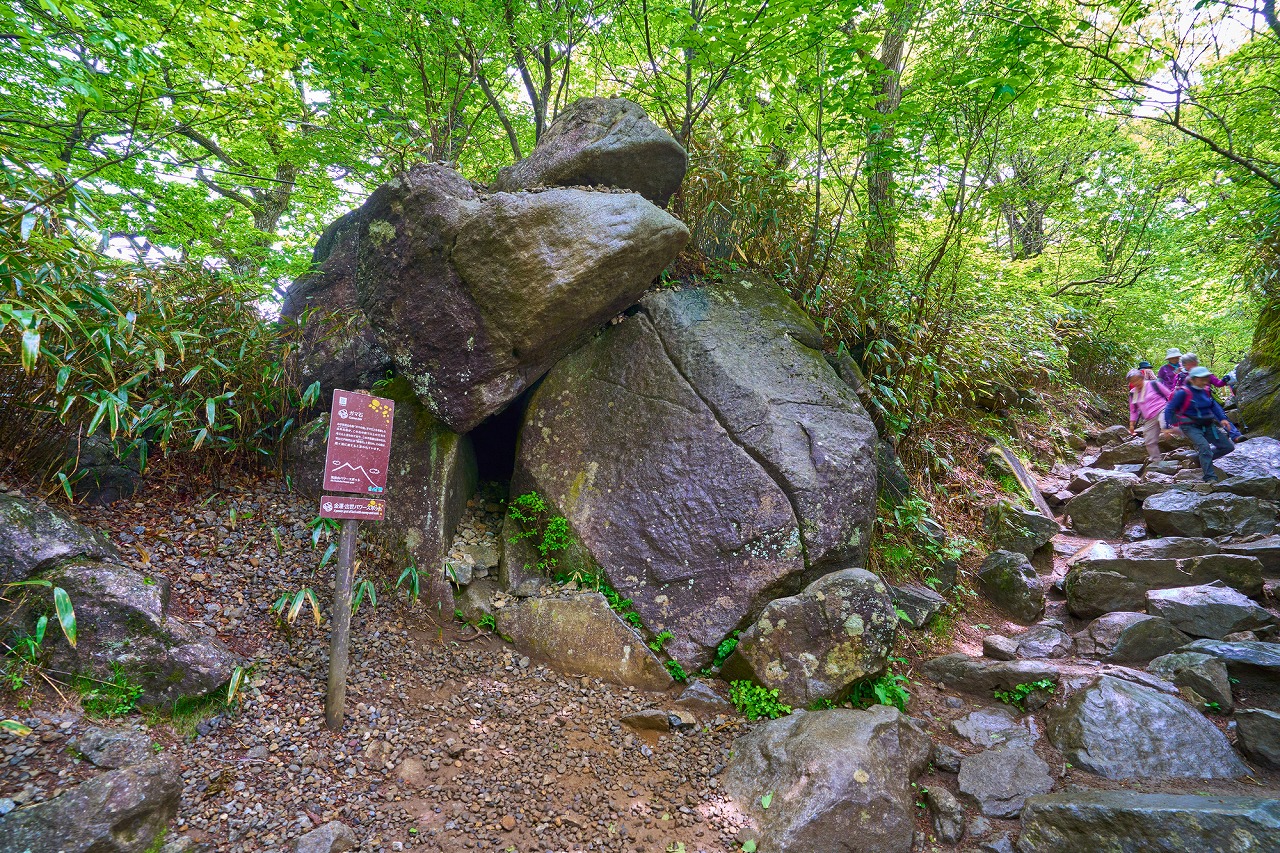 The Gamaishi Rock on the Mountaintop Connection Trail
The Gamaishi Rock on the Mountaintop Connection Trail
Back on the main path of the summit trail toward Nyotaisan, you’ll encounter a strange rock formation called Gamaishi (“gama” means “toad” in Japanese). Viewed from a certain angle, it looks like a frog with its mouth open. It is said that if you land a small stone in the frog’s mouth, you’ll be blessed with good luck in money-related matters.
This rock is where Mt. Tsukuba’s connection to frogs originates. Frogs are considered auspicious creatures in Japanese culture. Frog-shaped items and frog-themed souvenirs are among the most popular items purchased as mementos from Mt. Tsukuba.
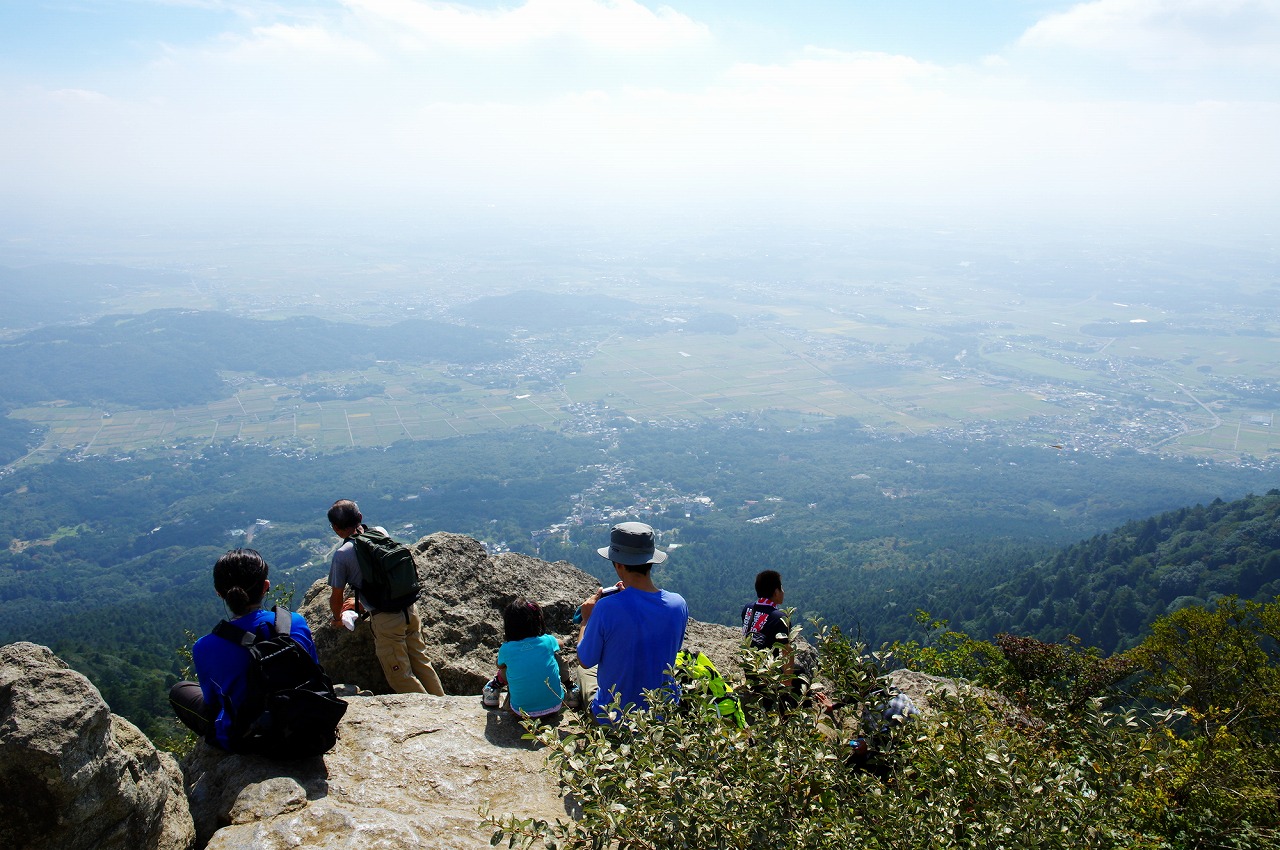
The views from the Nyotaisan Peak are very rewarding, allowing you to experience the majestic beauty of nature. You’ll want to spend a few minutes in silence just gazing out in the distance over the Kanto Plain.
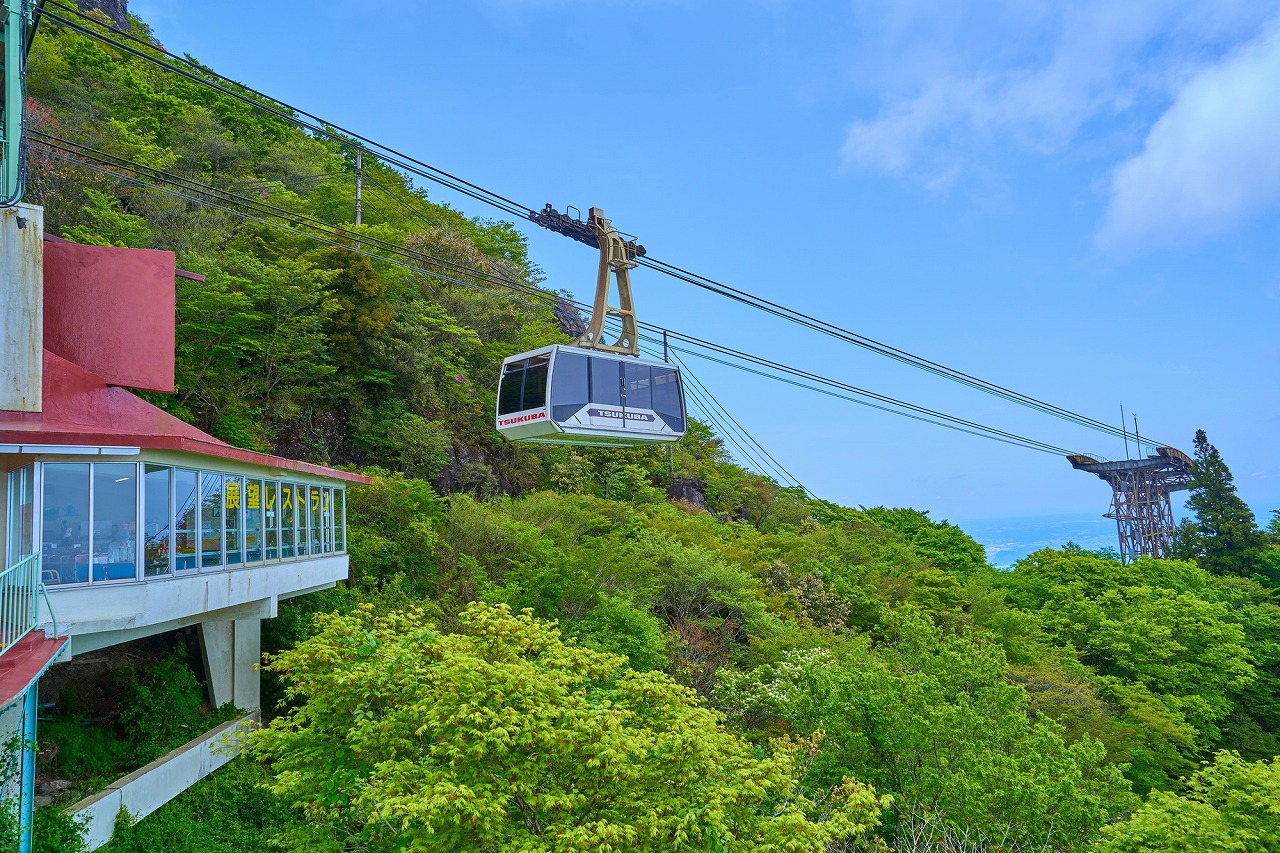
The summit ropeway station is located near the Nyotaisan Peak. The gondola will take you down to the Tsutsujigaoka Station and bus stop in about 6 minutes.
Hotels, Hot spring Inns, and Guesthouses at Mt. Tsukuba
An area with hot springs and beautiful natural scenery, Mt. Tsukuba has a variety of accommodation facilities for every budget. The area around the Tsukubasan-Jinja Iriguchi bus stop is known as Tsukubasan Onsen due to the multitude of hot spring inns and hotels.
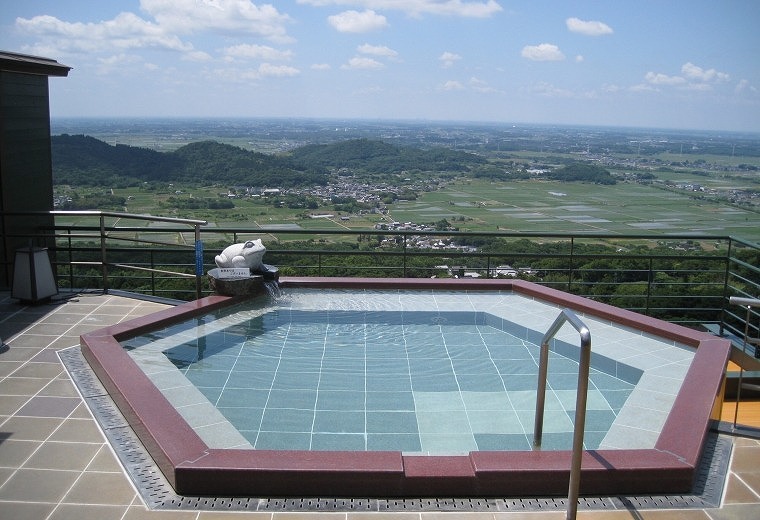 Outdoor bath with panoramic views at Hotel Aokiya
Outdoor bath with panoramic views at Hotel Aokiya
Hotel Aokiya is a well-established hot spring hotel on the foothills of Mt. Tsukuba. The guest rooms offer breathtaking views of the Kanto Plain. Some of the rooms have private outdoor baths. Enjoying a hot spring bath under the clear Tsukuba evening sky will surely become a treasured memory of your time spent here.
Tsukubasan Grand Hotel is a hotel with an elegant, classical atmosphere. It offers spacious rooms, hot spring facilities, and refined Japanese cuisine.
Guests seeking the simple hospitality of a traditional Japanese inn should book a room at Mount Tsukuba Edoya Inn. The spacious hot spring bathing area and the delicious kaiseki cuisine offered at the inn are some of the reasons for its popularity among Mt. Tsukuba visitors.
Hitotoki Hostel & Lounge is a guesthouse opened in a renovated traditional house. Visitors who wish to experience a simple Japanese lifestyle in a home with traditional architecture should definitely give it a try. Guests can gather on the first floor for meals or casual chats; this makes staying at Hitotoki a truly fun and unique experience.
Please check Ibaraki Guide’s accommodation page for other recommended lodgings at Mt. Tsukuba.
Visit Mt. Tsukuba for an Unforgettable Getaway in the Heart of Nature
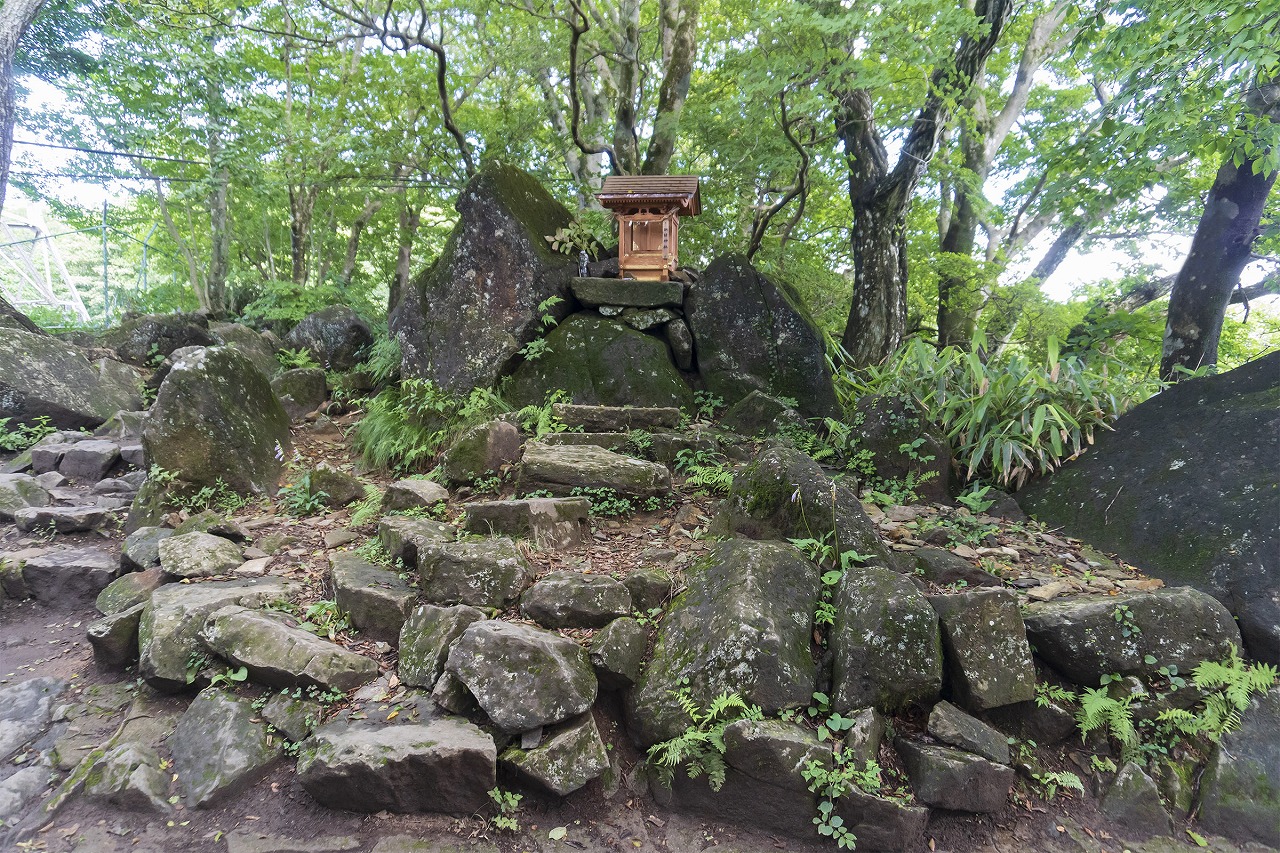
Mt. Tsukuba is easy to reach from Tokyo and is full of charm all year round. Due to the cable car and ropeway services, it is easy to go to the summit and enjoy the panoramic views from its two peaks.
Nevertheless, the endless array of myths and stories you encounter at every corner makes this mountain a must-visit destination in eastern Japan. We hope you’ll have the chance to discover some of these fascinating stories for yourself while exploring the bizarre rocks, shrines, and small altars on Mt. Tsukuba’s forest trails.
All pictures from Pixta
